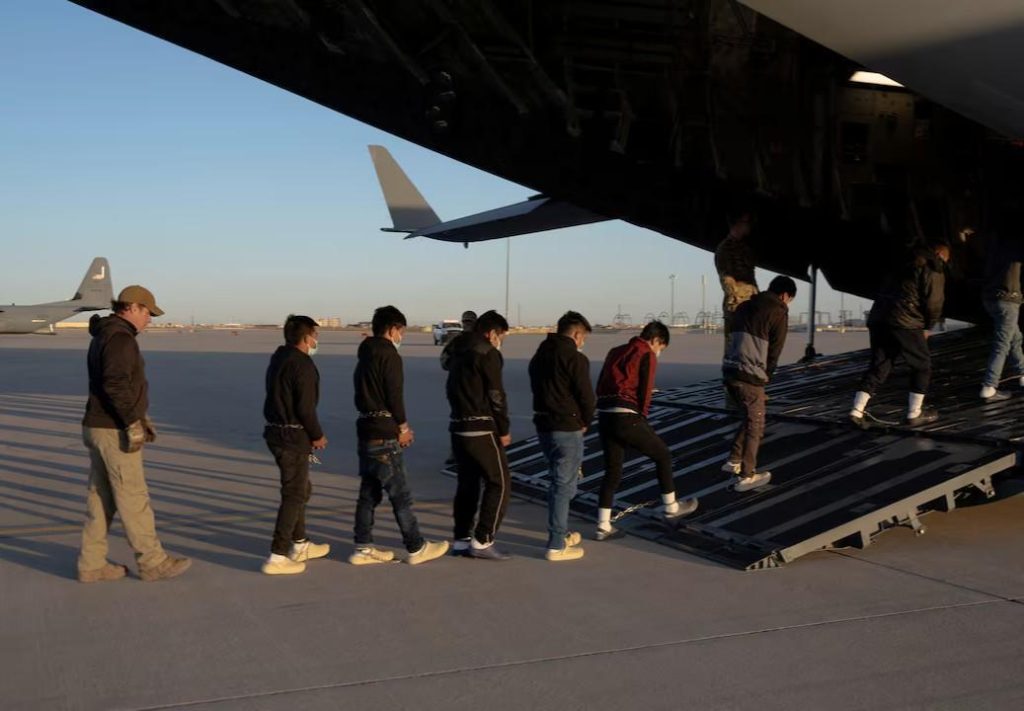
Why did several Indians choose the ‘dunki’ route via Europe to enter US?
In recent times, the issue of illegal immigration has been making headlines globally, with thousands of people attempting to cross borders in search of a better life. The United States, in particular, has been facing an influx of migrants from various countries, including India. However, what’s interesting is that a significant number of Indians who were deported from the US have opted for a rather unconventional route to re-enter the country – the ‘dunki’ route via Europe.
For the uninitiated, the ‘dunki’ route refers to the journey that takes migrants from India to the United States via Europe. The term ‘dunki’ is a colloquialism that is believed to have originated from the word “Donkey,” which is used to describe the arduous and laborious journey that migrants undertake. But why would Indians deported from the US choose this route when there are more conventional methods available? In this blog post, we’ll delve into the reasons behind this unusual choice and explore the pros and cons of the ‘dunki’ route.
A safer and quicker option
The main reason why Indians are opting for the ‘dunki’ route is that it offers a safer and quicker alternative to the traditional route that takes people through the Panama jungle. The journey through the jungle is notorious for its dangers, including bandits, snakes, and treacherous terrain. In contrast, the ‘dunki’ route allows migrants to cover most of their journey by air, which is not only faster but also safer.
According to reports, the ‘dunki’ route involves flying from India to Europe and then taking a connecting flight to the United States. The remaining stretch of the journey, which involves traveling from Nicaragua to El Salvador on foot or by car, is much safer and less strenuous compared to the jungle route. This is because the terrain is more forgiving, and the risk of encountering danger is significantly lower.
Another reason why Indians are choosing the ‘dunki’ route is that it allows them to avoid the risks associated with human trafficking. The Panama jungle route is notorious for being controlled by human traffickers who prey on vulnerable migrants, often subjecting them to physical and sexual abuse. In contrast, the ‘dunki’ route is a more legitimate and safer option that avoids these risks.
A more expensive option
While the ‘dunki’ route may offer several advantages, it’s not without its drawbacks. One of the significant disadvantages is that it’s a more expensive option compared to the traditional route. The cost of flying from India to Europe and then to the United States can be prohibitively expensive, especially for those who are already struggling financially.
Moreover, the ‘dunki’ route requires a significant amount of planning and resources, including the cost of visas, travel documents, and accommodation. This can be a significant burden for those who are already facing financial difficulties. As a result, the ‘dunki’ route is not a viable option for those who are looking for a cheap and affordable way to enter the United States.
A growing trend
Despite the challenges and expenses involved, the ‘dunki’ route is becoming increasingly popular among Indians who are looking to re-enter the United States. In recent times, there have been reports of several Indians who were deported from the US opting for this route to re-enter the country.
According to the Indian Express, there have been several instances where Indians who were deported from the US have been arrested and deported again from European countries. This has led to concerns among Indian authorities that the ‘dunki’ route could become a growing trend among Indians who are looking to re-enter the United States.
Conclusion
In conclusion, the ‘dunki’ route via Europe is an unconventional but increasingly popular option among Indians who are looking to re-enter the United States. While it offers several advantages, including a safer and quicker journey, it’s not without its drawbacks. The high cost of the journey, the need for significant planning and resources, and the risk of being arrested and deported again are all significant challenges that migrants need to consider.
Ultimately, the decision to take the ‘dunki’ route or any other route to enter the United States is a complex and personal one that depends on a range of factors, including financial resources, personal risk tolerance, and legal status. While the ‘dunki’ route may not be the most conventional or affordable option, it’s an option that is increasingly being considered by Indians who are looking for a safer and more efficient way to re-enter the United States.
Source: https://indianexpress.com/article/explained/indians-deported-us-dunki-europe-route-9843012/lite/



